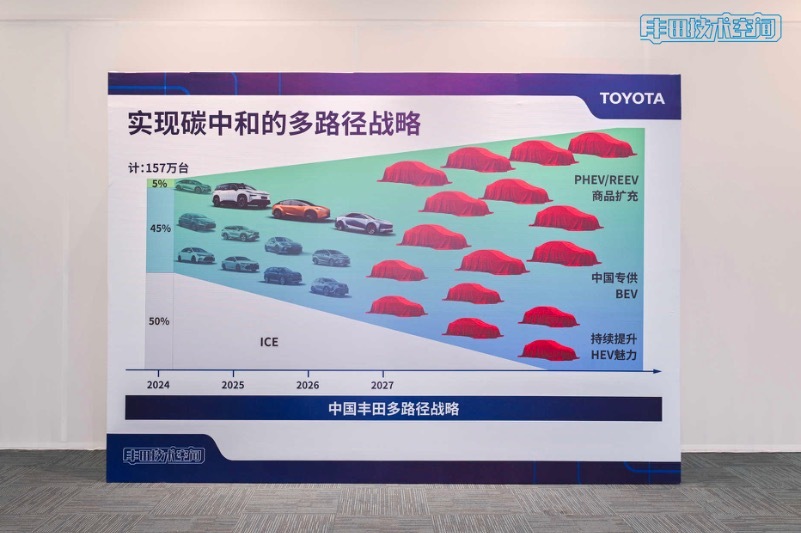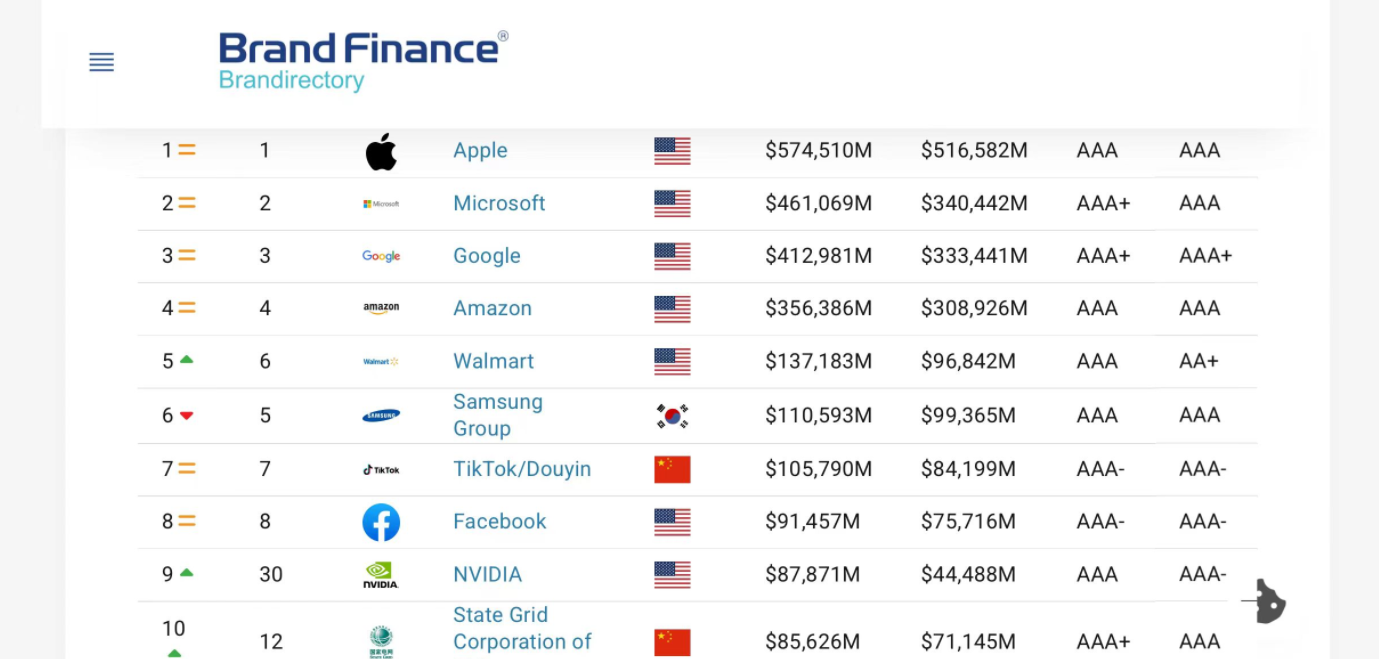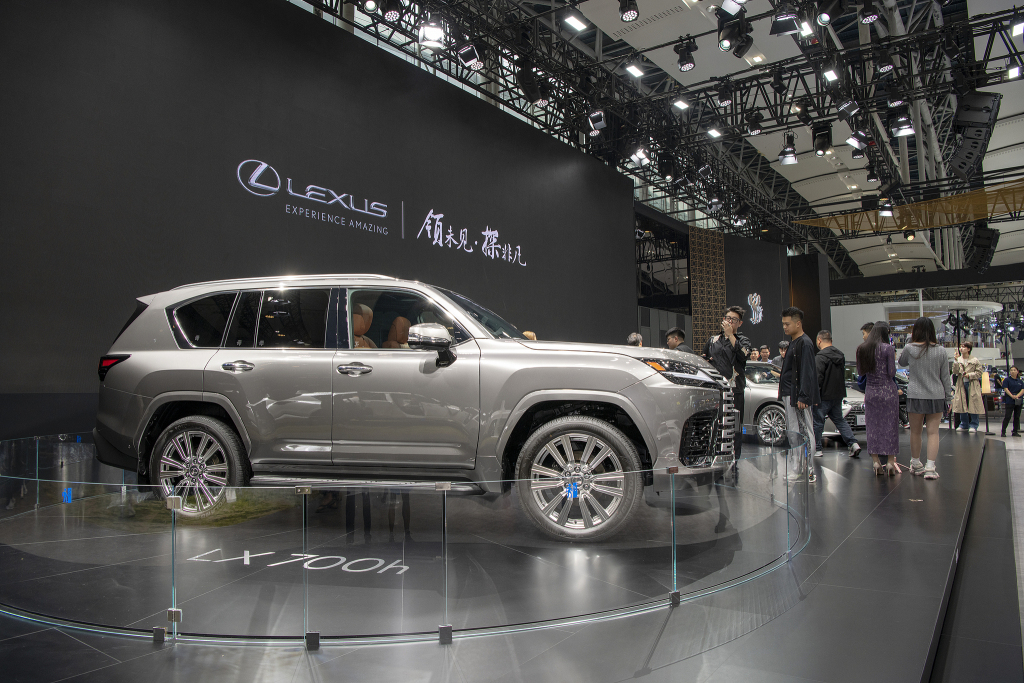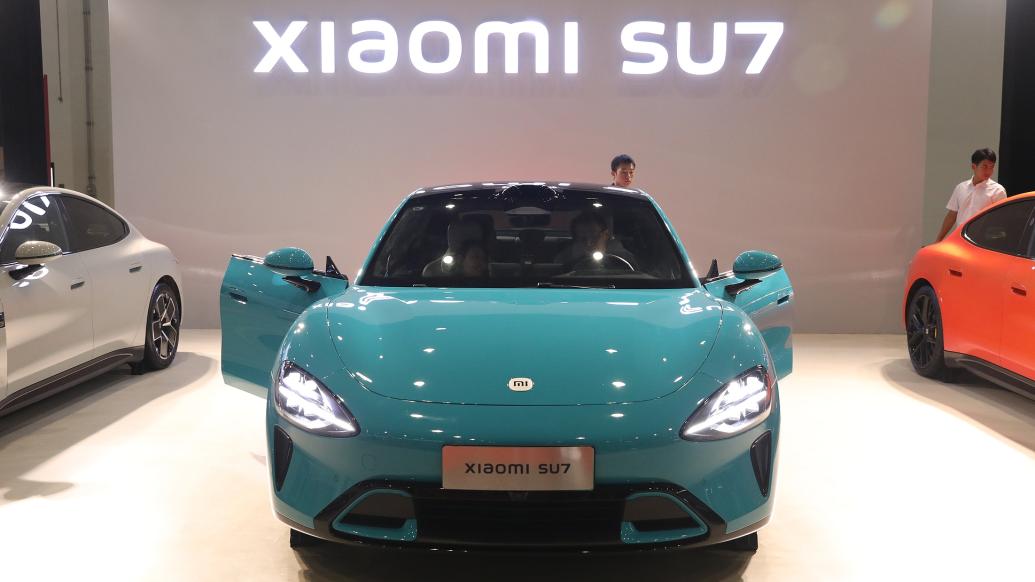
Toyota made a big move on the eve of the Shanghai Auto Show, giving a comprehensive and three-dimensional display of its business in China.
From intelligence to smart cabins, from hardcore off-road to high-performance racing, from design to engineering, from diversified electric paths to social carbon neutrality... At Toyota's Intelligent Electric Vehicle R&D Center (IEM by Toyota) in Changshu, the Japanese automaker spent more than half a year preparing and mobilized more than a hundred engineers and support staff, just to showcase the technology on April 19, and to seek opinions and suggestions from industry insiders with an open attitude.
It is no exaggeration to say that the communication content and technical experience of this day are equivalent to five press conferences, and it is difficult to describe them in detail in one article. Therefore, the focus of this article will be on its localization work on the core issues of the current industry, such as intelligence and electrification.
The "localization" of global automakers in China has roughly gone through three stages. The first stage is that parts are imported from overseas, assembled domestically, and global models are directly introduced into China; the second stage is the use of local supply chains, and overseas automakers provide adaptive adjustments for the Chinese market, such as "lengthening the wheelbase"; in the third stage, Chinese consumers begin to understand cars and their demands become diversified, forcing overseas brands to upgrade from "local production" to "local research and development", but product definition and decision-making power are still in their overseas headquarters - this is also the "greatest sincerity" that most overseas automakers can currently give to the Chinese market.

However, in the face of the "universal intelligent driving", "technological equality" and "far ahead" of Chinese car companies, these "sincerities" are obviously not enough to compete. Toyota has taken another step on this basis.
In fact, at the 2023 Shanghai Auto Show two years ago, Toyota Vice President and Chief Technology Officer Hiroki Nakajima proposed that "development in China must be implemented in China." Today, this concept has been further strengthened to "development in China must be led by the Chinese."
To this end, Toyota introduced the RCE system, which stands for regional chief engineer. According to Yoshiki Konishi, general manager of Toyota Intelligent Electric Vehicle R&D Center (China) Co., Ltd., RCE will bear the greatest responsibility for the development of future products. They are responsible not only for the new models of future generations, but also for the current models on sale. They will also develop more for customers. Their daily work is not only to do scientific research work within the R&D center, but also to go to the dealership to actively communicate with the on-site sales to understand the latest preferences and ideas of customers. In general, RCE is responsible for the entire model from R&D to sales.
In my opinion, at the current stage, RCE's primary task is to increase the product strength of Toyota's pure electric bZ series. Previously, the first model of the bZ series, bZ4X, did not succeed. One of the core reasons was that it was a "global model" and did not incorporate the needs of the Chinese market into the product.

After the introduction of the RCE system, the subsequent bZ/Bozhi series products have been significantly improved. For example, the Bozhi 3X model under the GAC Toyota channel. This product, led by the chief engineer of China, is based on Toyota's car-making concept and incorporates a lot of GAC Group's own technical accumulation, making a qualitative leap in intelligence, especially in intelligent driving.

In the actual experience of the test site, the car performed very smoothly in scenarios such as stopping when looking out of the blue, merging into the high-speed ramp, parking in the basement, and changing lanes at the same time. On the basis of "safety" as the primary algorithm strategy, the traffic efficiency is maximized. In some scenarios, its performance even surpassed some new forces labeled as "the first echelon of intelligent driving." As for the reason, Toyota engineers revealed, "Although we use Momenta's intelligent driving algorithm, we have set a strict safety bottom line for it. We also have a huge amount of vehicle data, which will affect the level of data-driven intelligent driving systems."

In addition, we also got to see the new cars that will be unveiled at the Shanghai Auto Show, such as the Bozhi 7 and bZ crossover, in the R&D center. Due to confidentiality reasons, we were unable to take photos, but it can be said that it has caught up with the new forces in terms of appearance and interior atmosphere.
In the words of Li Hui, general manager of Toyota Motor (China) Investment Co., Ltd., "If the bZ4X was called the 1.0 era, then the current bZ 3X, including the bZ crossover and the future bZ 7 should be called the 2.0 era. In the future, we hope that through localized research and development in China and the use of the most advanced technology, we can feed back to the world. This is the 3.0 era of bZ."
This year, another major news about Toyota is that Lexus will be produced in China in 2027, and the factory will be located in Jinshan District, Shanghai. This is a major move made by Toyota based on the changes and characteristics of the global market. In this project, Kato Takeo, the president who is responsible for BEV development globally, will serve as the general manager of the factory. The appointment was jointly decided by Chairman Akio Toyoda, President Tsuneharu Sato, and Vice President Nakajima.
"The chairman said: Not only do customers in the Chinese market attach great importance to BEV, we must also take the development of BEV seriously and let Toyota's global leaders come to the Chinese market to personally polish electric vehicle products. In the past, we brought some global models to China for relative improvements, but in the future we hope to have more Toyota models that are born in the Chinese market for the first time." Tatsuro Ueda, chairman of Toyota Motor (China) Investment Co., Ltd., relayed the reasons why Akio Toyoda made the decision.
In March this year, when Akio Toyoda came to China to communicate with employees, he also emphasized, "It is impossible for a business model and product to meet the needs of all global consumers. We can only satisfy local users by manufacturing better products that are suitable for different local needs."
At this year's Shanghai Auto Show, Toyota will bring more "modified cars" that have been adjusted and upgraded based on the needs of Chinese users to the booth to prove that it can be "honorable, plain, salty or sweet." Although it is just a display, "as long as consumers respond strongly, it can be put into use quickly."
These measures echo Toyota's new slogan recently proposed - "Global, for China". This seems similar to the slogan of other foreign automakers "In China, for the world", but the order is reversed and the concept is very different. "In China, for the world" is the global export of China's innovative achievements, while "Global, for China" emphasizes the localization reconstruction of China under the global system. It is not "kowtowing" to the Chinese market, but a natural process under the concept of "inheritance and evolution". It inherits Toyota's car-making philosophy and evolves a new product development concept based on user needs.


